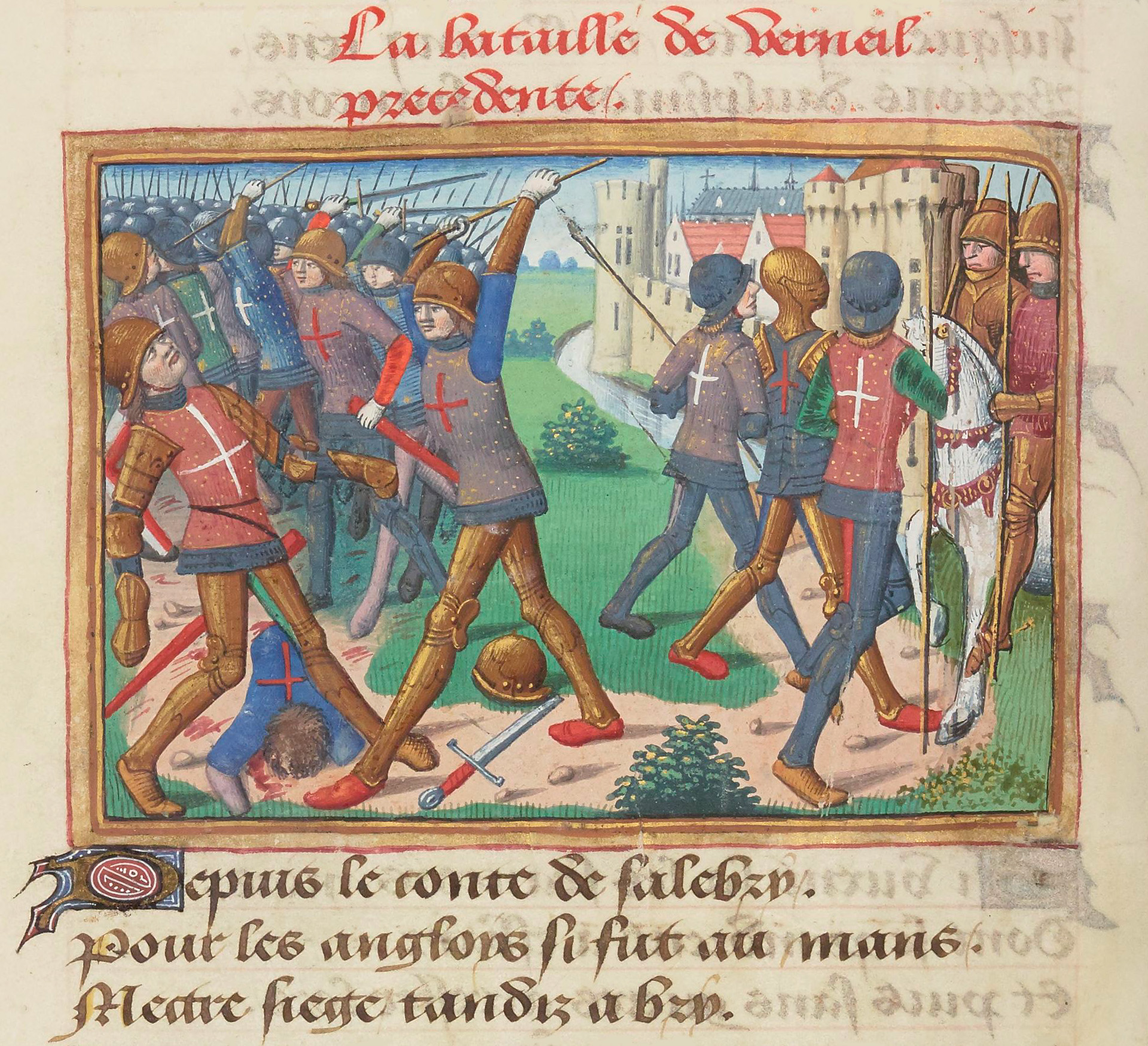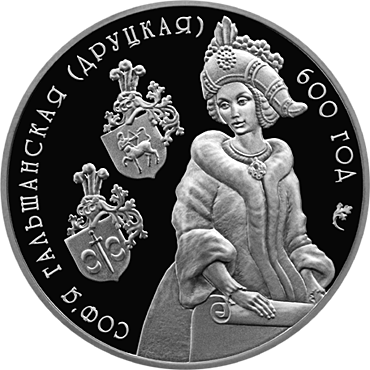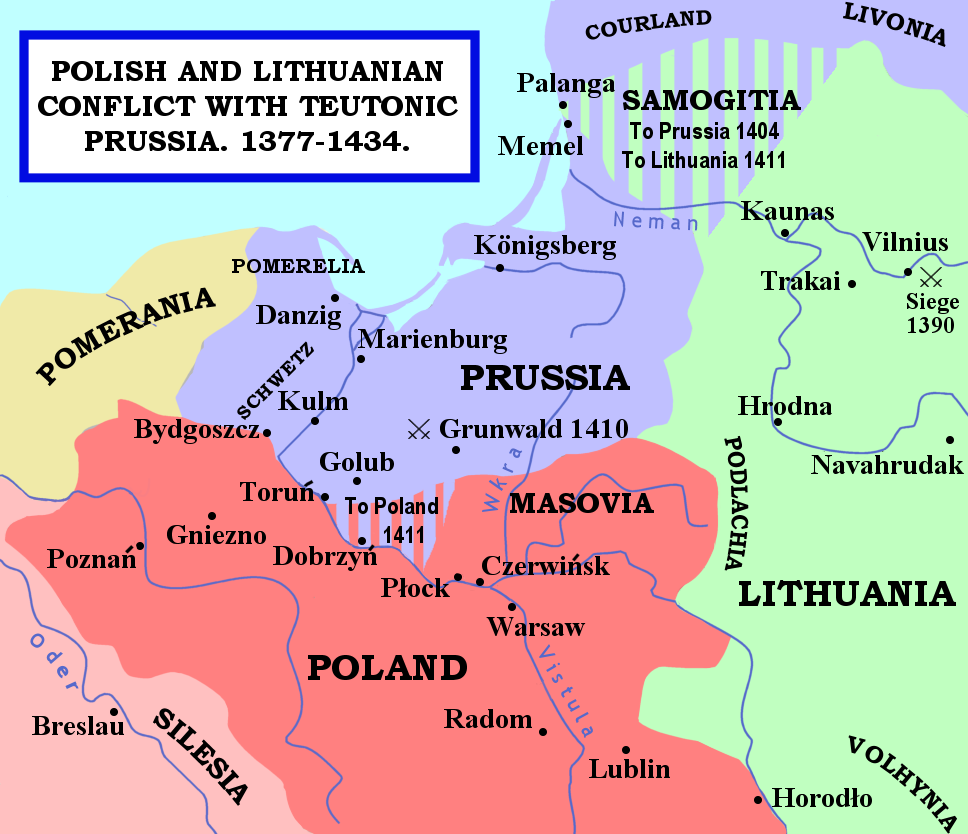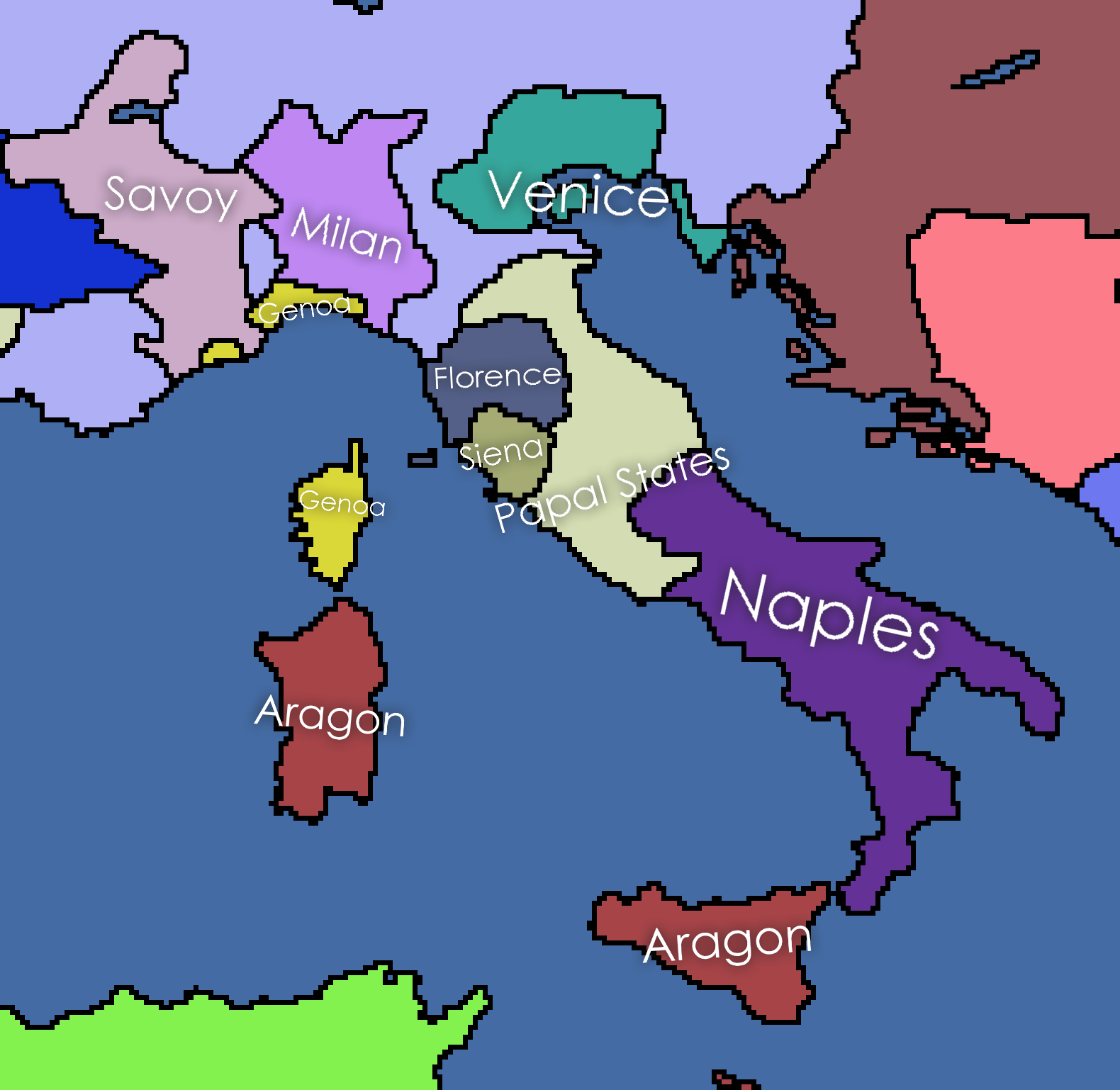|
1424
Year 1424 ( MCDXXIV) was a leap year starting on Saturday of the Julian calendar. Events January–March * January 23 – William Cheyne becomes the Lord Chief Justice of England and Wales, replacing the late William Hankford. * February 1 – While negotiating his release from captivity, King James of Scotland is allowed to be married to Joan Beaufort in London, with a ceremony taking place at Southwark Cathedral. * February 12 – The coronation of Sophia of Halshany, wife of Władysław II Jagiełło, as Queen consort of Poland takes place at the Kraków Cathedral. * February 14 – Wars in Lombardy: The Army of the Florentine Republic, led by Captain Pandolfo III Malatesta, storms the city of Romagna. * March 28 – King James I of Scotland is released after having been held captive in England for 18 years. James is freed after putting his royal seal on a ransom treaty of £40,000, secured by Scottish hostages taking his place, as agreed ... [...More Info...] [...Related Items...] OR: [Wikipedia] [Google] [Baidu] |
James I Of Scotland
James I (late July 1394 – 21 February 1437) was List of Scottish monarchs, King of Scots from 1406 until his assassination in 1437. The youngest of three sons, he was born in Dunfermline Abbey to King Robert III of Scotland, Robert III and Annabella Drummond. His eldest brother David, Duke of Rothesay, died under suspicious circumstances while detained by his uncle, Robert, Duke of Albany. James's other brother, Robert, died young. Concerns for James's safety deepened in the winter of 1405–1406 prompting plans to send him to France. In February 1406, James took refuge in the castle of the Bass Rock in the Firth of Forth after his escort was attacked by supporters of Archibald, 4th Earl of Douglas. He remained there until mid-March when he boarded a vessel bound for France. On 22 March, an English vessel captured the ship and delivered James to Henry IV of England. The ailing Robert III died on 4 April and the 11-year-old James, now the uncrowned King of Scotland, would rema ... [...More Info...] [...Related Items...] OR: [Wikipedia] [Google] [Baidu] |
Joan Beaufort, Queen Of Scots
Joan Beaufort ( 1404 – 15 July 1445) was Queen of Scots from 1424 to 1437 as the spouse of King James I. During part of the minority of her son James II (from 1437 to 1439), she served as the regent of Scotland, the first dowager Queen of Scotland to do so since the 13th century. Background and early life Joan Beaufort was a daughter of John Beaufort, 1st Earl of Somerset, a legitimised son of John of Gaunt by his mistress (and later third wife) Katherine Swynford. She was born in 1404. Joan's mother was Margaret Holland, the granddaughter of Joan of Kent (wife of Edward the Black Prince) from her earlier marriage to Thomas Holland, 1st Earl of Kent. Joan was also a half-niece of King Henry IV of England, first cousin once removed of Richard II, and great-granddaughter of Edward III. Her uncle, Henry Beaufort, was a cardinal and Chancellor of England. King James I of Scotland met Joan during his time as a prisoner in England, and knew her from at least 1420. She is s ... [...More Info...] [...Related Items...] OR: [Wikipedia] [Google] [Baidu] |
War Of L'Aquila
The War of L'Aquila (Italian: ''Guerra dell'Aquila'') was a conflict in 15th-century Italy. It started in 1423 as a personal conflict against the condottiero Braccio da Montone and the city of L'Aquila in Abruzzo, but later turned into a national conflict when the forces of the Duchy of Milan, the Republic of Florence, the Papal States, and the Kingdom of Naples were also involved. Braccio da Montone was killed in the final battle near L'Aquila. Background In 1423 Braccio da Montone was named by Queen Joanna II of Naples as constable of the Abruzzi for ten years. The condottiero, however, was fighting in Umbria, and named Ruggero d'Antignola as governor with the task to put these lands under his personal rule against the royal power of the Kingdom of Naples. After an initial period of good relationships, in late 1422 the citizens of L'Aquila, fearing to lose their secular autonomy, rebelled under the leadership of Antonuccio Camponeschi and expelled Ruggero d'Antignola. The Camp ... [...More Info...] [...Related Items...] OR: [Wikipedia] [Google] [Baidu] |
Sophia Of Halshany
Sophia of Halshany (; ; ; – 21 September 1461 in Kraków), known simply as Sonka, was a princess of Lithuanian Alšėniškiai princely family who was Queen of Poland as the fourth and last wife of Jogaila, King of Poland and Supreme Duke of Lithuania. As the mother to Władysław III and Casimir IV, she was the co-founder of the Jagiellonian dynasty. Early life and marriage to Jogaila Sophia was the niece of Uliana Olshanska, the wife of Vytautas, and a middle daughter of , son of Vytautas' right-hand man Ivan Olshansky, and , daughter of Dmitry of Druck. Historians disagree on the identity of Dmitry: Polish historiography usually provides Jogaila's half-brother Dmitry I Starshiy while Russian historians provide Dimitri Semenovich of Rurikid origin. Her father died when she was young and the family moved to Druck to live with Alexandra's brother Siemion Drucki. Sophia grew up in a Ruthenian environment and was an Eastern Orthodox Christian (her Orthodox name is Sop ... [...More Info...] [...Related Items...] OR: [Wikipedia] [Google] [Baidu] |
William Cheyne (judge)
Sir William Cheyne (died 1443) was an English lawyer, and Chief Justice of the King's Bench from 1424 until 1438. He has been described as "one of the most obscure chief justices of the late medieval period". Life Though he is assumed to have been born between 1370 and 1380, his parentage is not known. The situation is complicated by the roughly contemporary existence of at least two other men by the name of William Cheyne: Sir William Cheyne of Brooke, Wiltshire (d. 1420), and William Cheyne of Shurland, Kent (d. 1441) This William Cheyne came from Sussex, and it is here that he makes his first appearance in the record, as a Justice and the Peace and commissioner of that county from 1406 onwards. His career was advanced through the patronage of Thomas FitzAlan, Earl of Arundel; he was one of the executors of the earl's will in 1415. In 1412 he was created a serjeant-at-law. At the time this was an unpopular position, due to the high cost of the creations ceremony, and the Crow ... [...More Info...] [...Related Items...] OR: [Wikipedia] [Google] [Baidu] |
Władysław II Jagiełło
Jogaila (; 1 June 1434), later Władysław II Jagiełło (),Other names include (; ) (see also Names and titles of Władysław II Jagiełło) was Grand Duke of Lithuania beginning in 1377 and starting in 1386, becoming King of Poland as well. As Grand Duke, he ruled Lithuania from 1377 to 1381 and from 1382 to 1401, at which time he became the Supreme Duke of Lithuania in exchange for naming his cousin Vytautas as the new Grand Duke. Władysław II initially served as King of Poland alongside his wife Jadwiga of Poland, Jadwiga until her death in 1399, and then the sole ruler until his own death in 1434. Raised a Lithuanian polytheist, he converted to Catholicism in 1386 and baptized as Ladislaus () in Kraków, married the young Queen Jadwiga, and was crowned King of Poland as Władysław II Jagiełło. In 1387, he Christianization of Lithuania, converted Lithuania to Catholicism. His reign in Poland started in 1399, upon the death of Queen Jadwiga, lasted a further thirty-fiv ... [...More Info...] [...Related Items...] OR: [Wikipedia] [Google] [Baidu] |
Jacopo Caldora
{{Infobox noble, type , name = Jacopo Caldora , title = Duke of Bari , image = Il Condottiere.jpg , caption = , alt = , CoA = , more = no , succession = Duke of Bari , reign = {{nowrap, 11 October 1432 – 15 November 1439 , tenure=, predecessor = Raimondo Orsini del Balzo , successor = Antonio Caldora , spouse = Medea d'EvoliJacovella da Celano , issue = Antonio CaldoraBerlingiero CaldoraMaria Caldora , noble family = Caldora , father = Giovanni Antonio Caldora , mother = Rita Cantelmo , birth_date = , birth_place = Castel del Giudice, Kingdom of Naples , death_date = {{Death date and age, 1439, 11, 15, 1369, df=y , death_place = Colle Sannita, Kingdom of Naples , burial_place = Badia Morronese, Sulmona , religion = Catholicism , occupation = , memorials = , website = , module = Jacopo Caldora or Giacomo Caldora (1369 – November 15, 1439) was an Italian condottiero. Biography Jacopo Caldora was born in Castel del Giudice (Abruzzo in present-day Molise, then part of ... [...More Info...] [...Related Items...] OR: [Wikipedia] [Google] [Baidu] |
Leap Year Starting On Saturday
A leap year starting on Saturday is any year with 366 days (i.e. it includes 29 February) that begins on Saturday, 1 January, and ends on Sunday, 31 December. Its dominical letters hence are BA. The most recent year of such kind was 2000, and the next one will be 2028 in the Gregorian calendar or, likewise 2012 and 2040 in the obsolete Julian calendar. In the Gregorian calendar, years divisible by 400 are always leap years starting on Saturday. The most recent such occurrence was 2000 and the next one will be 2400, see below for more. Any leap year that starts on Saturday has only one Friday the 13th: the only one in this leap year occurs in October. Common years starting on Sunday share this characteristic, but also have another in January. From August of the common year preceding that year until October in this type of year is also the longest period (14 months) that occurs without a Friday the 13th. Common years starting on Tuesday share this characteristic, from July ... [...More Info...] [...Related Items...] OR: [Wikipedia] [Google] [Baidu] |
Wars In Lombardy
The Wars in Lombardy were a series of conflicts between the Republic of Venice and the Duchy of Milan and their respective allies, fought in four campaigns in a struggle for hegemony in Northern Italy that ravaged the economy of Lombardy. They lasted from 1423 until the signing of the Treaty of Lodi in 1454. During their course, the political structure of Italy was transformed: out of a competitive congeries of communes and city-states emerged the five major Italian territorial powers that would make up the map of Italy for the remainder of the 15th century and the beginning of the Italian Wars at the turn of the 16th century. They were Venice, Milan, Florence, the Papal States and Naples. Important cultural centers of Tuscany and Northern Italy—Siena, Pisa, Urbino, Mantua, Ferrara—became politically marginalized. The wars, which were both a result and cause of Venetian involvement in the power politics of mainland Italy, found Venetian territory extended to the ba ... [...More Info...] [...Related Items...] OR: [Wikipedia] [Google] [Baidu] |
Lord Chief Justice Of England And Wales
The Lord or Lady Chief Justice of England and Wales is the head of the judiciary of England and Wales and the president of the courts of England and Wales. Until 2005 the lord chief justice was the second-most senior judge of the English and Welsh courts, surpassed by the lord chancellor, who normally sat in the highest court. The Constitutional Reform Act 2005 changed the roles of judges, creating the position of President of the Supreme Court of the United Kingdom and altering the duties of the lord chief justice and the lord chancellor. The lord chief justice ordinarily serves as president of the Criminal Division of the Court of Appeal (England and Wales), Court of Appeal and head of criminal justice, meaning its technical processes within the legal domain, but under the 2005 Act can appoint another judge to these positions. The lord chancellor became a purely executive office, with no judicial role. The equivalent in Scotland is the Lord President of the Court of Session ... [...More Info...] [...Related Items...] OR: [Wikipedia] [Google] [Baidu] |
Pandolfo III Malatesta
Pandolfo III Malatesta (c. 1369 – October 3, 1427) was an Italian condottiero and lord of Fano, a member of the famous House of Malatesta. He was the father of the infamous Sigismondo Pandolfo Malatesta and Blessed Roberto Malatesta. Biography He was the second son of Galeotto I Malatesta and Elisabetta da Varano After his fathers death, the Malatesta lands were divided: he received Fano, while his brothers Carlo, Andrea and Galeotto Novello inherited Rimini, Cesena and Cervia, respectively. Galeotto's sons were educated under humanists like Giacomo Allegretti and the famous Francesco Filelfo. Pandolfo began his career as condottiero at the age of 18, leading a band of ''masnadieri'' to ravage Tuscany. In 1388 he accepted a '' condotta'' from Venice against the Carraresi family of Padua. In 1393 he fought with Andrea against the Ordelaffi of Forlì, but his occupation of Todi and Narni, then part of the neighbouring Papal States, attracted him the excommunication of Pope ... [...More Info...] [...Related Items...] OR: [Wikipedia] [Google] [Baidu] |
List Of Polish Royal Consorts
The wives of the rulers of the Kingdom of Poland were duchesses or queens consort of Poland. Two women ruled Poland as queens regnant, but their husbands were kings ''jure uxoris''. Wives of early Polish monarchs Duchesses of the Polans Queens and High Duchesses of Poland Piast dynasty (1) Přemyslid dynasty Piast dynasty (2) Angevin dynasty Jagiellonian dynasty, Jagiellon dynasty Royal consort of the Polish–Lithuanian Commonwealth * Elżbieta Szydłowska (1748–1810) was the lover of King Stanisław August Poniatowski, Stanisław August. Some believe that she married the King of Poland in 1783, but their marriage was morganatic marriage, morganatic, so she wasn't Queen of Poland. However, there is no known reason for the marriage to have been morganatic, as Poniatowski's Pacta conventa required him to marry a Polish noblewoman, a requirement she satisfied, and there is no evidence that the marriage ever occurred. According to Wirydianna Fisze ... [...More Info...] [...Related Items...] OR: [Wikipedia] [Google] [Baidu] |





